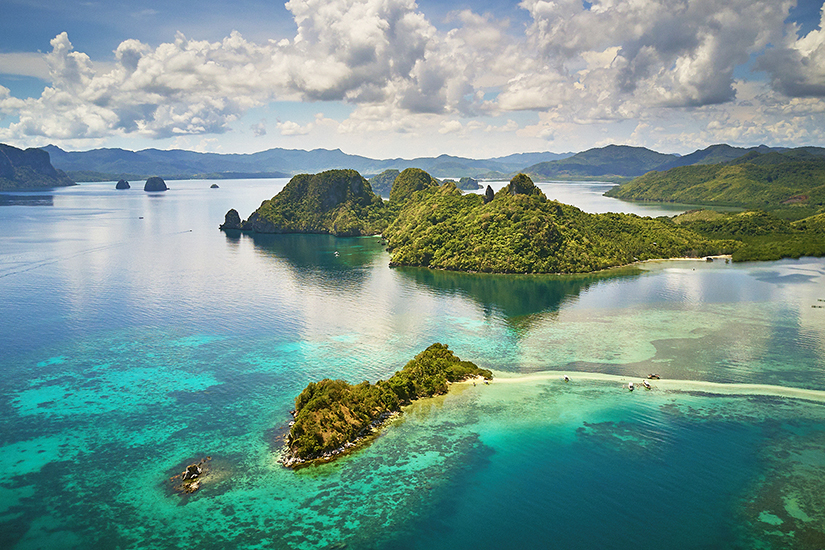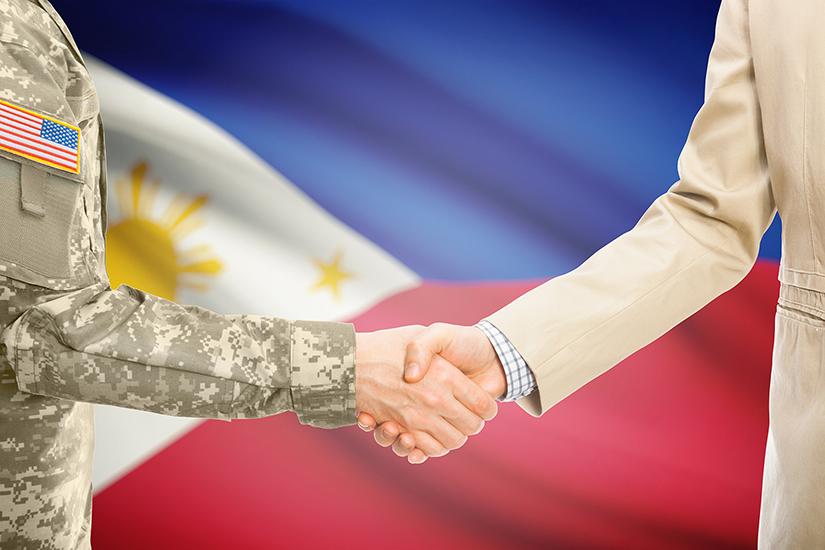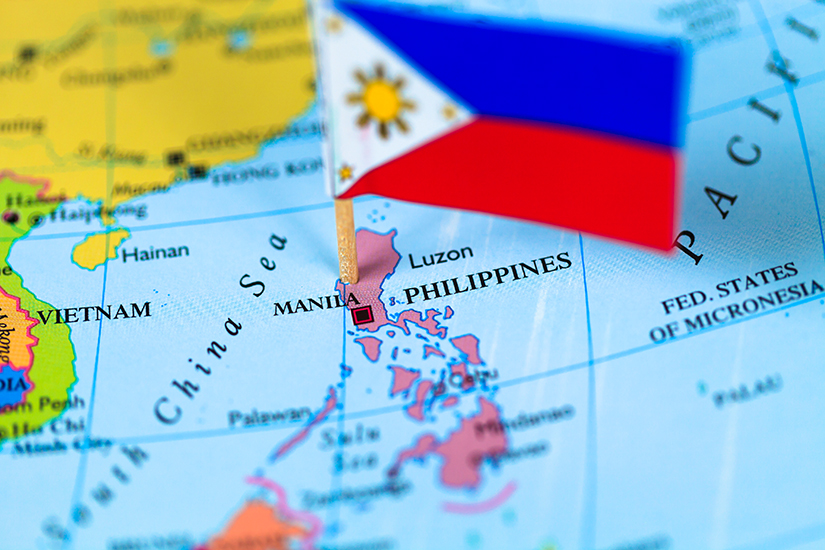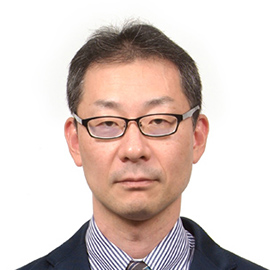Ferdinand Marcos Jr. was sworn in as the 17th President of the Philippines on June 30, 2022. Marcos had teamed up with then mayor of Davao City Sara Duterte, daughter of former President Rodrigo Duterte, to clinch a landslide victory in the presidential election in May of the same year (Sara Duterte now serves as Vice President). Before his inauguration, there was much debate about how the country would approach its foreign relations to address economic and security challenges; what kind of relationship it would forge, particularly with the United States and China; and whether it would continue Duterte's path of distancing itself from the United States and pivoting towards China.[1] To date, however, the Marcos administration has carefully assessed the balance of strategic interests and its relations with the major powers, and has sought to recalibrate the previous Government’s line. This commentary examines the current state of the Marcos administration's foreign policy, with a particular focus on the South China Sea issue, which remains a point of conflict between the United States and China as well as an urgent national security issue for the Philippines.

The Marcos administration's basic stance on Philippine foreign policy: Pursuit of equilateral foreign relations
The President wields tremendous influence over Philippine foreign policy, including the setting of diplomatic priorities, which has resulted in dramatic changes in foreign policy with each change of government.[2] For instance, the basic stance of the Benigno Aquino III presidency of confronting China and strengthening its alliance with the United States was reversed 180 degrees during the Duterte administration to one of distancing itself from the United States and moving closer to China. The country's foreign policy under the current Marcos administration has also shifted gradually from the stance of the Duterte administration, albeit not as drastic as during the Duterte era.
On the South China Sea issue, Marcos has made it clear early on just before taking office that he would support the 2016 arbitration ruling and would continue using the ruling to assert the country's territorial rights, taking a firm stance that he would not allow "a single millimeter of [the Philippines'] maritime coastal rights to be trampled upon."[3] These remarks were made against the backdrop of a public outcry in the Philippines against China, which has continued to harass Philippine government vessels and fishermen in the South China Sea while exerting pressure on the Philippines through the large-scale deployment of fishing vessels with maritime militia personnel on board. Marcos had sought to win public support by taking these sentiments into account.
In his State of the Nation Address held in July 2022, Marcos reiterated his firm stance by stating that he would not cede even one square inch of Philippine territory to any foreign power. At the same time, he declared that he would pursue an "independent foreign policy" where "the Philippines shall continue to be a friend to all, an enemy to none" in the international community. He also suggested that he would maintain appropriate relations with the United States ally while avoiding excessive dependence on it, as well as collaborate with China instead of adopting an exclusively confrontational approach.[4]
Marcos' sense of balance was also evident in the appointment of his foreign secretary. Following the inauguration of the new administration, Enrique Manalo, a career diplomat who had served as Permanent Representative of the Philippines to the United Nations, was appointed as Secretary of Foreign Affairs. Marcos' appointment of a practicing diplomat to the top diplomatic post indicated his objective and pragmatic approach to foreign policy, particularly concerning the United States and China.[5] In fact, the sense of balance in Marcos’ diplomacy could be clearly seen in the President’s outings. The first country he visited after taking office was not the United States or China, but Indonesia, a regional power in Southeast Asia that holds the 2023 ASEAN Chairmanship. Choosing Indonesia as the destination of his first overseas trip was also a means of bolstering his diplomatic platform.
Philippine relations with the United States: Nudging toward reinforcement of the alliance
In a conversation with a U.S. chargé d'affaires just prior to taking office, Marcos indicated his intention to maintain the Visiting Forces Agreement (VFA) with the United States.[6] When he subsequently visited the United States in September 2022 to attend the UN General Assembly, Marcos met with U.S. President Joe Biden for the first time. Central to their agenda was the situation in the South China Sea, with both sides underscoring their support for freedom of navigation and the peaceful resolution of disputes. Biden also reaffirmed the United States' ironclad commitment to the defense of the Philippines.[7]
The United States has moved to strengthen relations with the Philippines as part of its efforts to strengthen ties with its allies based on its Indo-Pacific Strategy and to regain lost ground by taking advantage of the change of administration. In November 2022, U.S. Vice President Kamala Harris visited the Philippines and met with Marcos. During the meeting, Harris reiterated the interests of the United States in peace and stability in the South China Sea, reaffirming that the United States stands with its Philippine ally in upholding the rules-based international maritime order, unimpeded lawful commerce, and respect for international law, including freedom of navigation.[8]
In addition, U.S. Secretary of Defense Lloyd Austin visited the Philippines in February 2023. In his meeting with Officer in Charge of the Department of National Defense Carlito Galvez, Austin made clear that the scope of the U.S.-Philippines Mutual Defense Treaty extends to the Philippine armed forces, public vessels, and aircraft in the South China Sea. At the same time, both parties also agreed that the U.S. military will utilize four new sites of the Philippine armed forces, in addition to the five existing locations, under the 2014 Enhanced Defense Cooperation Agreement (EDCA).[9]

Philippine relations with China: Seeking economic cooperation
The Marcos administration, meanwhile, has sought economic cooperation with China. In January 2023, Marcos made an official visit to China and held talks with President Xi Jinping. During the meeting, both parties agreed to engage in economic cooperation in a wide range of areas, with China pledging to invest a total of $22 billion in the Philippines, in addition to $200 million in grants for the construction of bridges in the country. The two countries also agreed to deal with the South China Sea issue in an appropriate and amicable manner and to consider cooperation among fisheries in the disputed waters.[10]
From China’s perspective, the Philippines, which borders the South China Sea and Taiwan, is of great strategic importance. For this reason, as was the case during the Duterte era, China hopes to use economic cooperation as a lever to strengthen ties and thereby drive a wedge between the Philippines and the United States. Yet, many of the massive economic cooperation programs China had committed to during the Duterte era were never implemented. China will likely continue to “tease” the possibility of cooperation with the Marcos administration as it attempts to ascertain whether the Philippines actually serves Chinese strategic interests. However, adopting an approach that appears overly insincere could instead alienate the Philippines.
Tensions remain high in the South China Sea
Confrontations between the Philippines and China in the South China Sea have been frequent. In June 2022, a Philippine government vessel was blocked by a China Coast Guard vessel when it attempted to access the Second Thomas Shoal for a resupply mission.[11] In December of the same year, the Philippine Department of Foreign Affairs expressed concerns over signs that China had begun new land reclamation activities on islands not under its control.[12]
China's harassment tactics did not let up, and in February 2023, a China Coast Guard vessel aimed a military-grade laser at the crew of a Philippine Coast Guard vessel that was on a resupply mission at the Second Thomas Shoal. In response to the incident, Officer in Charge of the Department of National Defense Carlito Galvez held a telephone conversation with U.S. Secretary of Defense Lloyd Austin, during which Austin reiterated that an armed attack on the Philippine Coast Guard anywhere in the South China Sea would invoke U.S. mutual defense commitments under the U.S.-Philippines Mutual Defense Treaty.[13]
The Philippines became increasingly wary of China following the laser incident and has begun to leverage the U.S. alliance network to bolster its position in the South China Sea. At the Japan-Philippines Summit Meeting in mid-February, the two leaders agreed to strengthen and facilitate joint exercises and other activities between the two countries, cooperate on defense equipment and technology, as well as strengthen trilateral cooperation between the United States, Japan, and the Philippines.[14] The Philippines has also expressed its intention to seek the participation of Australia and Japan to be part of its planned joint patrols of the South China Sea with the United States.[15] Furthermore, Marcos discussed the South China Sea issue with Malaysian Prime Minister Anwar Ibrahim during his visit to the Philippines, and both parties agreed to address the issue through a new level of approach based on the ASEAN framework.[16]

Risks and limitations of balance-oriented diplomacy: Implications for the situation in the Taiwan Strait
Under the Marcos administration, the Philippines has sought to simultaneously strengthen security cooperation with the United States and economic cooperation with China. Marcos has pursued a foreign policy that “avoids excessive subservience to the West while also avoiding futile attempts to cozy up to China,” a strategy that could be described as "subaltern realism," whereby small nations seek to maximize their strategic autonomy by fostering close ties with each of the major powers that are in conflict with each other for the purpose of national development.[17] Because of the geopolitical importance of the Philippines, both the United States and China have expressed enthusiasm for increased cooperation with the country.
However, striking the right balance between its relations with major powers can be an extremely precarious act. Indeed, the escalation of China's harassment in the South China Sea has forced Marcos to prioritize the country's national security over its economy. Going forward, in addition to the South China Sea issue, the situation in the Taiwan Strait may compel the Philippines to make new choices.[18] While the Philippines can derive benefits from both the United States and China, given its importance to the two countries, it will find itself in a precarious position if the balance is upset.
(2023/5/16)
脚注
- 1 Aries A. Arugay, “Foreign Policy & Disinformation Narratives in the 2022 Philippine Election Campaign,” Perspective (ISEAS Yusof Ishak Institute), June 6, 2022, pp. 4-7.
- 2 Aileen S. P. Baviera, “Presidential Elections and the Country’s Foreign Policy,” Commentaries, Asia Pacific Pathways to Progress Foundation, December 9, 2015.
- 3 Sebastian Strangio, “Philippines’ Marcos Pledges to Upholds Landmark South China Sea Ruling,” The Diplomat, May 27, 2022.
- 4 “Full Text: President Marcos’ State of the Nation Address 2022,” Rappler, July 22, 2022.
- 5 “Philippines’ Marcos appoints career diplomat as foreign minister,” Reuters, July 1, 2022.
- 6 Neil Jerome Morales, “Philippines’ Marcos says he discussed defence deal with U.S. envoy,” Reuters, May 23, 2022.
- 7 The White House, “Readout of President Biden’s Meeting with Philippine President Ferdinand Marcos Jr.,” September 22, 2022.
- 8 The White House, “Readout of Vice President Harris’s Meeting with President Marcos of the Philippines,” November 21, 2022.
- 9 U.S. Department of Defense, “Readout of Secretary of Defense Lloyd J. Austin III Meeting with Philippine Senior Undersecretary and Officer in Charge of the Department of National Defense Carlito Galvez,” February 2, 2023, “Philippines, U.S. Announce Four New EDCA Sites,” February 1, 2023.
- 10 Ministry of Foreign Affairs, People’s Republic of China, “Joint Statement between the People’s republic of China and the Republic of the Philippines,” January 5, 2023.
- 11 Asia Maritime Transparency Initiative, “Update: China Blocks Another Philippine Resupply Mission,” July 27, 2022.
- 12 Philip J. Heijmans, “China accused of new territorial grab in South China Sea,” Japan Times, December 21, 2022.
- 13 U.S. Department of Defense, “Readout of Secretary of Defense Lloyd J. Austin III’s Call with Philippine Senior Undersecretary and Officer in Charge of the Department of National Defense Carlito Galvez,” February 21, 2023.
- 14 Ministry of Foreign Affairs of Japan, "Nichi-Firipin Shunō Kaidan [Japan-Philippines Summit Meeting]," February 9, 2023.
- 15 Karen Lema, “Exclusive: Japan, Australia may conduct South China Sea patrols with U.S., Philippines – ambassador,” Reuters, February 28, 2023.
- 16 Presidential Communications Office, Republic of the Philippines, “PBBM, PM Anwar agree to use new level of approach on WPS issue,” March 1, 2023.
- 17 Richard Heydarian, “Ferdinand Marcos Jr.’s Foreign Policy: A New Era?” Inquirer.Net, June 14, 2022.
- 18 "'Ajia o jintori no taishō ni sasenai' Marukosu daitōryō, hatsuhōnichi no nerai ['Asia shouldn't become a target in strategic power plays': President Marcos on his objectives for his first visit to Japan]," Asahi Shimbun, February 9, 2023.

